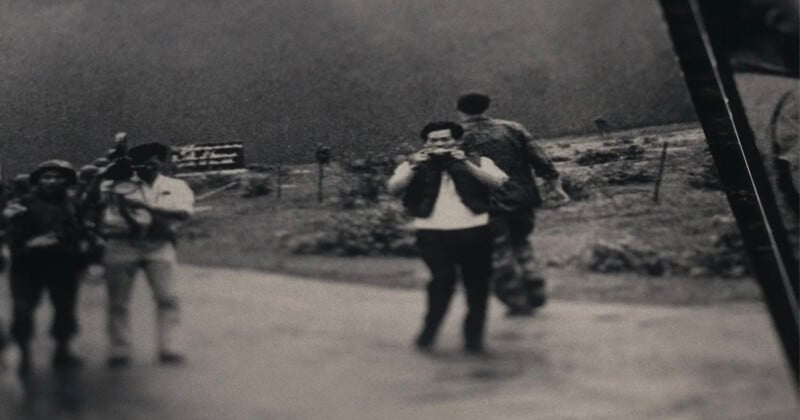World Press Photo Suspends Nick Ut’s Credit on ‘Napalm Girl’

World Press Photo has suspended Nick Ut’s authorship of Napalm Girl after a documentary claimed that he did not take the famous photo.
In a statement today, executive director Joumana El Zein Khoury says “The level of doubt is too significant to maintain the existing attribution.”
World Press Photo has not reassigned credit to the photo but does mention freelancer Nguyen Thanh Nghe who is named by the documentary as the real author of Napalm Girl.
The documentary in question, The Stringer, exclusively aired at the Sundance Film Festival earlier this year, and therefore very few people have been able to see it — PetaPixel has repeatedly asked for a screening of the film but has been denied.

The film, made by The VII Foundation, has sparked a lengthy investigation from the Associated Press (AP) who Nick Ut was working for during the Vietnam War. The report, published last week, concluded that there is not enough evidence to change the credit on the famous photo of Phan Thi Kim Phuc running from a napalm attack in Trang Bang, South Vietnam, on June 8, 1972.
In its report, AP says it is open to the possibility that someone other than Ut could have taken the photo but remains unconvinced. World Press Photo has highlighted this.
“When reduced to its core, what is striking is the convergence across all three investigations — by World Press Photo, AP, and the filmmakers — that there remains doubt about the photo’s authorship,” writes El Zein Khoury.
“While the image has traditionally been credited to Nick Út, the available evidence points to a strong possibility that Nguyễn Thành Nghệ took it instead, but also raises the possibility that Huỳnh Công Phúc may have been in a better position to take the photo.”
Huỳnh Công Phúc is a Vietnamese military photographer who would sometimes sell photos to Western media and has since been found to have been very close to the scene of Napalm Girl.
Gaps, Holes, and Blind Spots
As mentioned, World Press Photo has published its own six-page report on the authorship of Napalm Girl, which has the official title of The Terror of War.
In The Stringer, a reconstruction of the day’s events is shown which leads to the conclusion that Ut could not have been present on the road when the photo was taken.
“If limited to Ut and Nghe, the current visual and technical evidence leans toward Nghe,” concludes World Press Photo’s report.
“In addition, the confirmed presence of at least one other potential photographer further underscores the uncertainties surrounding the image’s authorship.
“Together, these factors raise substantial and credible reasons to question the traditional attribution of this iconic photograph. As no single conclusion is definitive, and unless or until conclusive proof of authorship emerges, World Press Photo is suspending credit for The Terror of War.”
Piecing together a complete timeline of a chaotic event that took place over 50 years ago in an analog era is nigh impossible and there are notable gaps in all of the investigations.
“AP’s extensive review concluded that credit for its iconic ‘The Terror of War’ photo will remain with Nick Ut while identifying real questions that we may never be able to answer,” AP tells PetaPixel in a statement.
“AP standards require proof and certainty to remove a credit and we have found that it is impossible to prove exactly what happened that day on the road or in the bureau over 50 years ago. This is all outlined in great detail in the AP report.”
“We understand World Press Photo has taken different action based on the same available information, and that is their prerogative,” AP adds. “There is no question over AP’s ownership of the photo.”